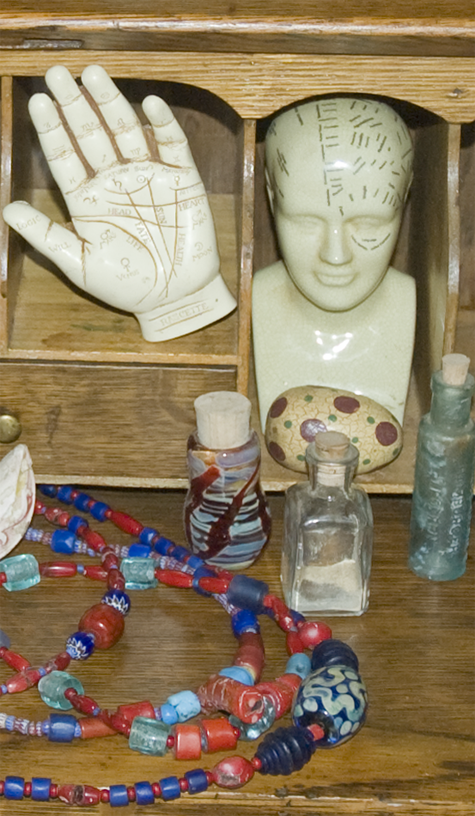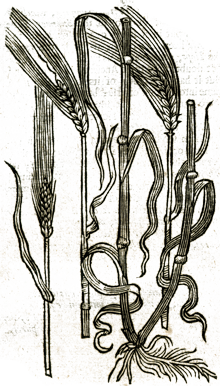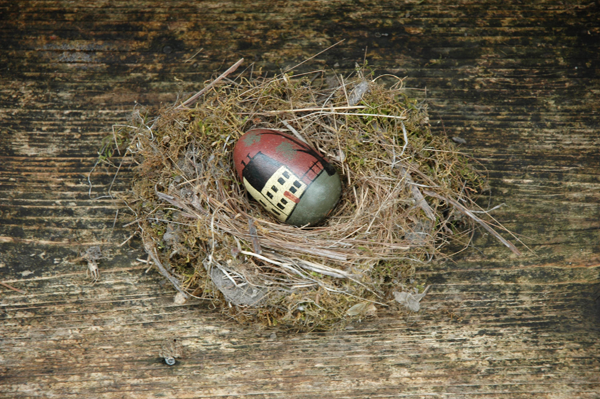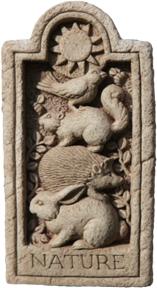| |
 |
|
| |
|
|||||||||||||||
|
|
|
Intuition, Imagination, and Magic
Matthew Wood MS (Herbal Medicine) Jacob Boehme (1575-1624) was a German cobbler who fashioned a theology that encompassed and developed the concept of Sophia (Wisdom) based on his intuitive and visionary perceptions. The doctrine of Sophia includes Natura Sophia (the Wisdom of Nature) and Divine Sophia (Theosophia). The following is an extract from Matthew Wood's writing on Boehme's life and theosophy. Jacob Boehme is known as a visionary. In order to understand his perceptions and writings we need to understand what that means. The cobbler of Gorlitz makes clear that it is not possible to understand divine and eternal realities through reason. It is a captive of the material and temporal world and, as such, he says, pays obeisance to the devil. Yet, God has provided humanity with faculties by which we can perceive Divine reality. Boehme describes two basic functions that touch the Divine. These are the intuition and the imagination, or visionary faculty. Since these are not well understood, we must exert ourselves to comprehend them if we wish to understand Jacob Boehme. The intuition is a "function" of the psyche (Jung, ) which allows us to see the pattern or whole within the person or the situation, and thus to unite disparate phenomena into a holistic understanding. The intuitive thinks in terms of underlying archetypes or patterns in the world. This is why Boehme constantly refers to forms, essences, properties, virtues, characteristics, signatures, similitudes and other terms that allow one to think in terms of patterns. Both Paracelsus and Boehme are representatives of the intuitive type. The intuitive experience creates the famous 'aha moment' when everything seems to fall into place. Thus, the intuition has a revelatory quality. For the intuitive, what is perceived appears to be the truth. Therefore, intuitive perceptions automatically seem to eclipse or go beyond the confines of materiality. The intuitive thinks in terms of 'truths' rather than rational explanations. He or she desires to build a system of 'truths' instead of the cause-and-effect rationale more characteristic of the dominant culture. These traits crisscross almost every page written by Paracelsus and Boehme. The intuition does not, however, provide the basis for the visionary faculty. This grows out of what would be ordinarily called the imagination (Einbildung). The ability to see images in the mind occurs as a result of physical vision. Such images can also be generated in one's own mind. However, this is not true seership or vision, according to Boehme. In order to achieve true imagination or Divine vision we need to remove our self-will and see as God sees.
Intuition and imagination both produce a 'magical' view of the world. The former gives rise to the theory of 'sympathetic magic;' archetypes are considered so real that two different entities of the same nature are conceived to have an influence upon one another. The imagination is likewise thought to flow from mind to mind and exert a hidden influence that can change material reality. Thus, it too is often considered a source of magic. Both Paracelsus and Boehme argue in favor of a magical world controlled by these forces. In anthropological terms, to live in a magical world is called participation mystique. Modern culture, based upon rationalism and materialism, has abolished such enchantment. It characterizes this as a condition of children and naïve persons. Jacob Boehme was clearly a participant in a magical worldview. It would not be fair to describe him as a naïf, because he consciously chose to reject rationalism and materialism. Yet he lived in a time when this was a more common and accepted attitude than it is today. Part of the problem with Boehme's seemingly unusual mode of perception is that it is alien to the modern mind. Cyril O'Regan observes, Foucault's The Order of Things. . . unearths Paracelsian alchemy as the epitome of the episteme or mode of knowing exemplified in premodern discorse that is the 'other' of modern rational-intrumental discourse. The logic exemplified by Paracelsian alchemy is analogical, its semantic is a semantic committed to obscurity, its truth a sense of wholeness or pansophia, and its value that of illumination. By contrast modern thought is logical and inductive, its semantic committed to disclosure, its truth that of determinate outcomes based upon hypothesis and testing, and its value ultimately defined by power over the world of goods (O'Regan, 1992, 22). Boehme himself only occasionally used the terms intuition, imagination, vision, and magic. He himself more frequently speaks of the "Light of God" as the source of knowledge of the Divine mysteries. According to Boehme's theology, the Light of God streams forth from the primal Abyss when the will of God returns to it. The will of God that leaves the Abyss seeking creation is the Father, while the will that returns to the Nothing (Nichts) is the Son. This brings peace, harmony, reconciliation, and understanding. The Light streams forth on the return of the will of the Son to the Abyss, according to Boehme. This is the Light by which mankind knows the Divine. Streaming down to a lower level, the Light illuminates the archetypal substratum of the natural world. Here it is called the Light of Nature. The archetypal substratum, or field of essences from which creatures take their natures and characteristics, is Sophia. Streaming down to denser levels of creation, the Light provides the course, physical light by which the material eye sees and the intellectual light by which reasoning takes place. However, these levels are accessible to Lucifer. Therefore, the physical and intellectual light is not spiritually reliable. Fortunately, the Light provides humanity with the intuition and imagination by which God can be seen, heard, and known. This circle of associations: intuition (signatures, similitudes, forms, essences), imagination (images of the Divine world), magic, the Light of God, the Light of Nature, and Sophia (wisdom Divine and natural), characterizes the mental universe of Jacob Boehme. Although he only stops to analyze the nature of perception at rare intervals in his work, he does devote thought to these topics and provides us with concise definitions. Hence, we would have to say that Boehme is quite psychological for his time. Our visionary intuitive also describes himself as speaking under the influence of the spirit. Thus, inspiration could be considered a third faculty by which Boehme perceives non-ordinary reality. However, it appears from his writings that the spirit, or Holy Spirit, provides inspiration for him to write about certain topics and is not, therefore, a means for knowing those subjects.
Reason The rational faculty reasons from cause to effect, and thus from beginning to end. However, the true God is eternal and has no cause or beginning, observes Boehme. Therefore, reason is incapable of a true understanding of God. It is not only crudely materialistic and temporal, but it is subject to the influence of the devil. Yet, Boehme is forced to use reason to communicate. These conceptions about reason are found in Boehme's writings from his first to last works. In Aurora (23/16), he explains that he has to write in a rational fashion, "that you may understand," but this is in the "manner of the devil." Thus, he is forced to write as if the "Deity had a beginning" and as "if the light of God had not yet kindled itself." In The Way to Christ, he still notes the limitation of rationality. "Reason is natural life, whose ground is in a temporal beginning and end," and that it "cannot come to the supernatural ground where God is to be understood" (Way, 7/1/2). Another mature work, On the Election to Grace (6/38), pictures reason as arrogant, artificial, and abstract. Reason in its presumption and vain opinion, without Divine light, is a fool before God, and knows not what God is. It always imagines something strange and remote when it wishes to speak of God, and makes in the eternal unchangeable God, in his eternal Triad, a will and purpose that have a beginning. Although this paragraph condemns reason, it also seems to indicate that reason, if it were 'with Divine light,' is capable of positive use. This would have to be possible, otherwise both the scriptures and Boehme's own writings would have no real value. However, this does not obscure the fact that reason is bound to the world of time and space. It exists to assist humanity in that world. Therefore it is rooted in a world which is not Divine and which, instead, is open to the influence of Lucifer. While Boehme dismisses reason as a method for knowing God and eternity directly, he assures us that God has provided means for us to know higher truths directly. God has given [mankind] the understanding and perception to know God his creator; what and whence man is, how he is, and where he is, and out of what he proceeded, or was created, and how he is the image, substance, propriety, and child of the eternal, uncreated, and infinite God, in which God has his own substance and propriety, in whom he lives and governs with his spirit, by which God makes his own work, and loves him dearly as his own heart and substance (Three Principles, preface/2). The "knowledge of God" is provided by the "Light of God," which I plan to discuss in greater depth. As we will see, this Light provides the light found on all levels, including the intellectual and the visual, the heavenly and the earthly. However, as the revelator of Divine knowledge, the Light of God proves to illuminate or consist of two faculties, the intuition and the imagination. The first of these is extensively described in Signatura Rerum or The Signatures of All Things (1622) and the second in The Supersensual Life, which Boehme's early editors thoughtfully placed at the back of Signatura.
Intuition In the opening paragraph of The Signature of All Things, Boehme declared the use of signatures to be the basis of the true understanding of the divine and eternal worlds (Signatura, 9): All whatever that is spoken, written or taught of God, without the knowledge of the signature, is dumb and void of understanding because it proceeds only from an historical conjecture, from the mouth of another, whose spirit is dumb and without knowledge. However, if the spirit opens to him the signature, then the person understands the speech of another, and further, he understands how the spirit has manifested and revealed itself in the sound and voice [of that person], out of the essence through the [manifest] principle. For though I see one speak, teach, preach, and write of God, and though I hear and read the same, yet this is not sufficient for me to understand him. However, if his sound and spirit, arising out of his signature and similitude, enter into my own similitude, and he imprints his similitude into mine, then I may understand him really and fundamentally, whether written or spoken. He has the hammer that can strike my bell. Thinking from patterns was identified by the psychiatrist C. G. Jung as "intuition." He explained that the intuitive grasps the pattern implicate in an experience. This appears to the intuitive as an absolute 'truth.' Thus, the intuitive builds a worldview based on 'truth.' This can be used in day-to-day decision-making in business or it can become the basis of a religious or spiritual cosmology. This, clearly, is what Boehme did. German philosophy developed the concept of 'intuition.' Jung, who is responsible for introducing the word into modern psychology and conversation, says he got the term from Schopenhauer. Jung admits that he is not well read in German philosophy. This is just as well because the word was widely used by German philosophers as a whole and not just by Schopenhauer. Rudolf Steiner, who spent a lifetime immersed in German philosophy, correctly associates the term 'intuition' with the entire tradition. We see this in his book Intuitive Thinking as a Spiritual Path (1996). Since German philosophy started with Paracelsus and Boehme -- they were the first to write about higher ideas in German -- the development of the concept of the intuition within this tradition was a natural outcome. Both Jung and Steiner acknowledge the existence of four basic functions or faculties the soul has for perceiving the world. Both draw on the same philosophical tradition. In addition, both were influenced by metaphysical literature in which the four elements of Greek philosophy correspond to four different approaches to life, as in astrology or tarot. The swords (air) are associated with the mind, cups (water) with feeling, coins (earth) with physical activities, talents, and physical perception, and batons (fire) with speculation, new ideas, conflict and resolution. Jung considered the intuition to be one function among four, of equal reliability or defectiveness with the others, whereas Steiner considered the intuition to be a form of spiritual perception, where the others were material. In this he agrees with Paracelsus and Boehme. This, indeed, makes him another example of Jung's observation that the intuitive interprets his intuitions to be 'truth.' In his discussion of the intuition, Steiner points out that the faculties of physical observation, thinking, and feeling allow us to focus the mind on only one thing at a time. By comparison, the intuition puts the whole picture together so that we see how the parts fit the whole. This gives us the 'aha moment' in which one feels a sense of rightness and completion. Paracelsus, Boehme, and Steiner would extend this intuitive sense of truth, rightness, and completeness to embrace spiritual truths. Thinking in an intuitive fashion unveils what is spiritual and frees the thinker from the purely material world. Steiner explains why this is the case. The intuition helps us to see the whole, the complete pattern, or the innate character in a person or situation. Through seeing the whole or essence in others we are helped to understand our own innate individuality. This helps us to become who we really are, and who we are is a spiritual being. Thus, the intuition can assist us on the road to spiritual freedom. Intuitive Thinking as a Spiritual Path (1996) was originally entitled The Philosophy of Freedom (1896). Recently, the value of holistic thinking has been acknowledged. The intuition is that which helps us to unite disparate phenomena together into a whole. One can see the value of this for human survival. Since reason, feeling, and sensation can only concentrate on one separate perception at a time, a unitive faculty is necessary, to bring the pieces of the puzzle together into a meaningful whole. It is like the scene in Jurassic Park, where the humans see the small dinosaurs running and realize, in an 'aha moment,' that larger, dangerous predators must be behind them. Jung defined thinking and feeling "rational" functions because they followed rational processes that could be traced by outside observers. Thinking follows logic and feeling has its own instinctive and emotional rationale, based on positive and negative reinforcement. Jung called the intuition and sensation "irrational" because the objects of physical sensation appear to be completely real while the objects of intuition appear to be the truth. This is not 'rational' because there is no objective way of knowing whether sensations and intuitions actually represent the real and the true. Over the millennia, intuitive thinkers have developed terminology in order to describe intuitive perceptions. One of these would be the concept of the 'form,' 'type,' or 'archetype.' This is used by the intuitive to describe the underlying pattern or essence in a person or situation.
Plato was the first to coin such a term. He introduced the word eidos, which is usually translated as "idea" or "form." Although this word gives rise to several meanings, such as idea, ideal, species, form, stereotype, and archetype, it has been consistently used to represent the concept of the archetype or essence by philosophers down through the centuries. Even Plato's more rational student, Aristotle, continued to use the term. Thus, Aristotle defined 'formal logic' as the attempt to identify the 'form' (eidos, eidea) inherent in a person, animal, plant, or mineral. For Aristotle and the long lineage of Western philosophers of ancient times, the 'form' stamps the inchoate, unformed 'materia' with its identity. The later is formless, unorganized chaos waiting for something to stamp it with identity. Both words -- form and idea -- are used by Boehme, showing that he had been exposed to philosophical concepts, probably through conversation with educated friends. The concept of undifferentiated matter or materia also shows up in his work but primarily in the terms chaos and Mysterium magnum. However, Boehme generally uses terms more commonly found in Paracelsian alchemy (essence, property, virtue, principle, or spirit) rather than classical philosophy (form, idea, essence). Plato, Aristotle, Paracelsus, and Boehme thought of the form, archetype, or essence as a real entity. Jung, a scientist, could not accept intuitive deductions as necessarily true. As a psychologist he accepted the existence of the unconscious, and posited the existence of the collective unconscious. However, he rejected the existence of a spiritual world independent of the unconscious. Therefore, he felt free to adopt the word 'archetype' from the Western philosophical tradition and give it a different use. Thus for Jung the word 'archetype' refers to a highly charged component of the unconscious (or collective unconscious) that generates psychic contents in people. This modern use (or misuse) of the term obscures what the ancient philosophers, seers, and alchemists meant by such terms as form, idea, essence, and archetype. The worldview of Plato, Aristotle, Paracelsus and Boehme has been dismissed from modern rational culture and its terms may be expropriated and used out of context. This is a powerful tool for ignoring and minimalizing a tradition. The form, essence, property, virtue, type, or archetype of an individual human, animal, plant, or mineral is eternal according to the older Western philosophical tradition. On the one hand, it is a remote entity, like an abstract thought, and yet through its outward signature it is intimate and close, providing immediate knowledge of a holistic kind. Although Boehme advocated the intuitive approach to understanding nature, he very seldom gives examples where he actually analyses nature in this fashion. However, in The Signatures of All Things he uses oak as an example. From the ordinary standpoint an oak is a tree with a certain appearance and properties such as slow growth, thick bark, heavy, hard, sometimes twisted or knotty wood, etc. The bark contains tannins so astringent that it was once widely used to tan hides. These properties already paint a strong picture and thus the oak is often used as a symbol of steadfastness and integrity. Since Saturn is the planet (or archetype) that is used to represent slow, steady growth, steadfastness, integrity, and even astringence and contraction, the association between oak and Saturn is fairly intuitive. Here is Boehme's discussion of oak. If the saturnine property be predominant, and chief in a thing, then it is of a black, greyish colour, hard and spare, sharp, sour, or salt in taste; it gets a long lean body, grey in the eyes, or a dark blue; of a very slender body, but of a hard touch, though the property of saturn is very seldom alone master in a thing; for the soon awakens Mars with his hard impression, who makes his property bending and crooked, full of knots, and hinders the body from growing high, but is full of branches and rugged, as is to be seen in oak-shrubs, and the like trees (Signatura, 9/33). Astringence is a property and therefore for Boehme moves to the level of essence or archetype. Not only does it embrace physical astringence, but all kinds of contractive states of mind and body. This is a very important archetype for Boehme because contraction is the first impulse towards creation. Since God cannot find anything outside himself, he must turn within in order to find creation and this inward-turning or contracting is thus the root of all manifestation. Astringence corresponds to the first of the seven creative spirits or characteristics, which form and rule the world. While such terms as archetype, form, essence, property, virtue, etc., are used by the intuitive to describe the hidden pattern of wholeness within a situation or a person, the word 'signature' has been used to describe the outward, external, physical manifestation of the pattern in the world. Thus, for Boehme, a black, gray, or dark blue color, a hard, lean shape, an astringent, sharp, sour, or salty taste are outward signatures of the archetypal principle of astringence. The rough, contracted bark of the oak is a signature. A tall, lean stature is a signature. The signature is the abode of the spirit, which has an archetypal pattern imprinted upon it. The signature or form is no spirit, but the receptacle, container, or cabinet of the spirit, wherein it lies; for the signature stands in the essence, and is as a lute . . . upon which the will's spirit plays (Signatura, 1/4). One of the few words that Boehme uses both for the essence and for the signature is 'form.' This is derived from Platonic philosophy. Plato defined the eidos (idea, form) as the source of outward characteristics. The signature is seen in the "speech, will, and behavior" of a person, and also in the shape or "form of the members which he has." The "inward form is noted in the form of the face." This principle of correspondence between the signature and the archetype is true in "a beast, an herb, and trees; everything as it is inwardly [configured,] so it is outwardly signed" (Signatura, 1/11). Since the primal archetype of a person is equivalent to their innate character or spiritual personality, when the true nature of a person is being expressed he or she feels harmony and freedom. This is true whether a person is working towards good or evil. So soon as man is born into this world, his spirit plays upon his instrument, so that his innate genuine form in good or evil is seen by his words and conversation (Signatura, 1/7). The opposite is also true. When a person is not able to express his or her true nature in his outward activities and personality he or she is tortured. Working a boring job does not allow one to express one's own nature. However, one can work towards a goal of a fulfilling vocation. When one succeeds great pleasure is felt in the work. Worse yet, someone may intentionally attempt to control a person and make them conform to a design other than their own. Worst of all, "the will may be broken" when the "stronger one comes, and raises his inward signature" in the creature (Signatura, 1/10). Then the dominated person or creature is forced to do what the other desires against his or her own will. When, on the other hand, a person meets a friend or mentor who encourages him or her to express who they really are, then there is less pain and more fulfillment, because the person moves closer to their true nature. From these illustrations we see the origin of the 'law of similars,' or the idea of healing by similarity. When a person meets a person who encourages them, they may get better. But since human beings, rocks, plants, and animals can manifest the same archetype in their outward person, it becomes possible for a rock or a plant or animal to heal a person, or for a plant to heal and animal, and so forth. This is the origin of the doctrine of 'sympathetic magic,' in which it is believed that a similar object acts upon that to which it is similar. This, of course, is rejected by conventional rationalism. To the intuitive, on the other hand, it makes perfect sense. Thus, Boehme adopts the doctrine of similars as a universal law of healing. Opposition between creatures, not to mention odious domination, occurs when a contrary will exercises influence over a person or creature. Thus, the dark world, inhabited by devils, is a contrarium (Signatura, 2/2), where every will attempts a narcissistic domination of every other and all strive against all, all the time. The law of similars, based upon the doctrine of signatures, is the basis of Paracelsian medicine. By comparison, the law of contraries, or hot to cold, was the basis of Galenic medicine. Although it is best for a biographer to keep his own opinions out of the study of his subject, I have to say, as an herbalist practicing for three decades, treating tens of thousands of people, that both doctrines work. Sometimes we heal by love and acceptance, but sometimes a little opposition and discipline is required. It is like parenting, or teaching school. Thus, when a person is chilled we do give warming medicines and we do heal, and when the tissues are relaxed and losing tone we give an astringent. Yet, the most healing astringent is one that personifies the lesson that the person needs to learn, that is their spiritual similar. Thus, oak is for those who have lost their integrity because it personifies integrity, it is the similar to integrity, but it is the opponent and cure when there is lack of tone and tissue integrity because the oak-quality in the body has been damaged. Thus, the law of similars is the deeper doctrine, and the law of contraries only works when the contrary will is aware of the true nature of the creature it is trying to help; when it is trying through modest opposition to restore the creature to itself. If the dark world is the realm of self-will and contrary activity, each will attempting to overcome every other will, then the light world is the dominion in which all differences are resolved because all creatures are happily manifesting only who they are and are not trying to control anyone else. Also, those of the same type are extremely happy together, while those of a different type are happy with their group and neither bothers the other. Thus, similarity is the underlying principle of the light world. This, of course, is Paradise, the abode of the fulfilled soul, while the dark world is Hell, where the selfhood cannot die but remains forever cut off from all else. Paradise or heaven is thus the field of archetypes or essences existing in peace and harmony. This realm is brought to us by Sophia. She is the receptacle of the Divine impulse towards creation, so that she reflects back to God and allows him to see his own nature. "Upon the mirror of Wisdom are reflected the archetypes of all things" (O'Regan, 1992, 34). At the same time, she is the source-ground of the outward world, so that everything in external nature is a reflection of the eternal attributes of God, of the archetypes of creation. All are integrated freely and harmoniously within her. "Wisdom is that it offers an image of a possible world of integrated particulars" (O'Regan, 1992, 37).
Vision, or Seership The second faculty used by Boehme is vision or seership. This is equivalent to the 'imagination,' or the ability to see images in the mind. Most people do not notice the images as they pop into the mind, but the visionary is constantly aware of them. However, imagination is notoriously subjective. Thus to become a seer a person not only needs to become aware of the images appearing on the screen of the mind, but he or she must purify the mind of all self-will so that the images are not tainted by either one's own illusions or those of others. Boehme says that the only way to purify the visionary faculty is to return to the primal abyss, where there is no self-will. Then, one's internal seeing and hearing will be purified, so that one will see and hear God directly. "Cease from all of your thinking and willing, then you shall hear the unspeakable words of God," writes Boehme in "The Supersensible Life," (Signatura, p. 227; translation modernized). "Blessed are you therefore if you can stand still from self-thinking and self-willing, and can stop the wheel of your imagination and senses." The ability to desist from the generation of one's own thoughts and will not only allows the visionary faculty to open up, but brings one into the realm of Paradise. In Three Principles ( ) Boehme explains, "If the soul elevates its imagination forward into the Light, in meekness and Comeliness or humility," it will be rewarded with "eternal Life," which is "paradisical, exceeding pleasant, friendly, humble, and sweet." Paradise is a reference to Sophia, the mirror in which God in the Divine vision sees his own creation. Because Sophia herself has no will she reflects the Divine vision perfectly. Thus, one sees the round of associations between purified vision, the Divine vision, the mirror in which the vision is seen, and Sophia. The will to return to the Abyss is identical to the Son aspect of the Trinity, while the will to leave the Abyss, and the peace and purity that dwells within it, are associated with the Father, and the creation of the universe. The will to creation "must be in darkness " and in the "contrariety," where there is no peace, but "it conceives within itself another will to go out from the darkness again into the liberty, viz. into the nothing" (Signatura, 2/11). When the Son returns to the abyss the Divine light shines forth, which illuminates man and all creation with true understanding. Christ "is that light" (Signatura, "The Supersensible Life," p. 231). Boehme describes the true Divine vision as the "sight of all things in God." In other words, it is like seeing with God's eyes and therefore it is untainted by self-will and desire. He also calls it a "pure and naked knowledge which is abstracted from the senses," so that it is not tainted by material and sensual vision. Finally, he calls it a "light above nature and creature" (Signatura, "The Supersensible Life," p. 231). Unfortunately, Boehme uses the term imagination (einbildung) to describe both true and false vision, whereas the poet William Blake differentiates between them as imagination and fantasy. At one point, grasping for words, Boehme calls the Divine vision "super-imaginariness" (Signatura, "The Supersensible Life," p. 230). In the following paragraph, Boehme contrasts the Divine vision with the vision of the physical eyes. When thou beholdest the deep, the stars, the elements, and the earth, then thou comprehendest not with thy eyes the bright and clear Deity, though indeed it is there and in them; but thou seest and comprehendest with thy eyes, first death, and then the wrath of God and the hellish fire (Aurora, 23/11). In another instance he remarks that without the Light of God we would "look upon ourselves and upon God's creation as heifers look upon a new door made to their stalls" (Three Principles, preface, 5). Boehme also contrasts the Light with the "astral birth" or what we would call the 'emotional' or 'psychological' level. But if thou raisest thy thoughts, and considerest where God is, then thou apprehendest the astral birth or geniture, where love and wrath move one against the other (Aurora, 23/12). For Boehme the imagination serves an indispensable purpose in the creation. It originates in the root of creation and the manifestation of the universe is impossible without it. The cosmos begins when the primeval will focuses the desire for creation and this generates images or imagination. These images generate the essences, which in turn become individual spirits, souls, and bodies. And this imprinted image is the joy of the divine intuition, though we are not to understand a comprehensible, creaturely image possessing circumscription; but the divine Imagination as the primal ground of Magic, from which the creation has had its beginning and origin (Grace, 1/14). The images are preceived in the mirror of Wisdom or Sophia, also the source-ground from which these 'individuals' descend into incarnation as inhabitants of the outward nature. All of these cosmological forces -- will, desire, imagination, seeing, mirroring -- are analogous to cognitive faculties we would recognize in ourselves. For instance, most people would hold that creativity, or artistic expression, does originate in the imagination. Images pop into consciousness of their own accord. They do not spring out of reasoning, but arise in an unforeseen manner which could indeed be called 'magical.' Creativity depends on the focus of the will, the desire to create, and the imagination. The creative processes cannot be dominated by the rational mind, like science, therefore creation and creativity is 'magic.' Thus, we arrive at the final aspect of Boehme's intuitive/visionary worldview.
Magic We are fortunate that Boehme left at least one extensive account of magic. This occurs in the 'Fifth Point' of the "Six Mystical Points," appended to The Six Theosophical Points. This relatively short book is probably the most psychological of his works, with extensive treatment of the issues of will, desire, and imagination -- the ingredients that create magic. Desire drives the hunger for something to be created while the will fixates the imagination on separate things. For Boehme desire and will are powers of the Deity by which the universe -- the something that is pulled from nothing -- is created. The image or imagination is the first expression of creation. The individual can participate in these cosmic powers through prayer and magic. The individual's will, desire, and imagination, if they are in alignment with the Creator, can accomplish miracles. Desire combines with will, or the power of fixation, to create something out of nothingness. Desire only makes of the will "such a being as the will in itself is." The will fixates the imagination into a figure or image. The appearance of the image is the actual act of creation by the will and the desire, so that the image is the final goal and the actual creation that the will and desire sought. It is also the first step in the manifestation of the universe. "In sum: magic is the activity in the will-spirit" (Six Theosophical Points, "Six Mystical Points," 5/24). Boehme was well aware that the leap from nothing to something is not a rational jump, and therefore it is magical, and magic is thus at the source of creation. Magic thus "leads the bottomless to foundation, and the nothing into something" (Six Theosophical Points, "Six Mystical Points," 5/10). It facilitates the unimaginable jump from nothing to something. In that jump there is will, desire, and imagination. Magic is the mother of eternity, of the being of all beings; for it creates itself, and is understood in desire. It is in itself nothing but a will, and this will is the great mystery of all wonders and secrets, but brings itself by the imagination of the desireful hunger into a being. It is the original state of Nature. Its desire makes an imagination (Einbildung), and imagination or figuration is only the will of desire. But desire makes in the will such a being as the will in itself is. Thus Magic is not a being, but the desiring spirit of the being. It is a matrix without substance, but manifests itself in the substantial being. Magic is spirit, and being is its body; and yet the two are not one, as body and soul is but one person (Six Theosophical Points, "Six Mystical Points," 5/1-5; sentences condensed into one paragraph). Magic is available to everyone. Indeed, nothing is done without magic. "Even the peasant in his field must go to the magical school if he would learn to cultivate his field." By magic both good and evil are created because it is an indifferent force. "It is of use for the children in God's kingdom, and also for the sorcerer's in the devil's kingdom" (Six Theosophical Points, "Six Mystical Points," 5/19). Magic is the book within which every scholar should read, and it is the foundation of the best theology. Magic is the best theology, for in it true faith is both grounded and found. And he is a fool that reviles it; for he knows it not, and blasphemes against God and himself, and is more a juggler than a theologian of understanding. As one that fights before a mirror, and knows not what the quarrel is, for this fighting is superficial; so also the unjust theologian looks on Magic through a reflection, and understands nothing of the power (Six Theosophical Points, "Six Mystical Points," 5/23-4). At this time 'natural magic,' or sympathetic magic based on the doctrine of signatures, was considered to be a responsible kind of 'magic' separate from 'demonic' magic, which was based on the conjuration of spirits. Therefore, Boehme's magic is not outside the canon of acceptable ideas. However, within the context of his own life, this has to be considered an extremely radical and daring statement. Boehme, who has already been persecuted by theologians in the person of the Rev. Gregory Richter, does not hesitate to identify himself with the magical worldview and to condemn conventional theologians as foolish, superficial, unjust, and blasphemous. In modern terms, Boehme has also left the acceptable ground of reason. He lives in a magical world. I would suggest that radical adherance to the intuition and vision, both of which support a magical world view, necessarily end in the creation of such a world. Thus, I would link these three together: the intuition, imagination, and participation mystique. Boehme is not just describing Paradise, he is already a participant.
|
||||||||||||||
|
||||||||||||||||






